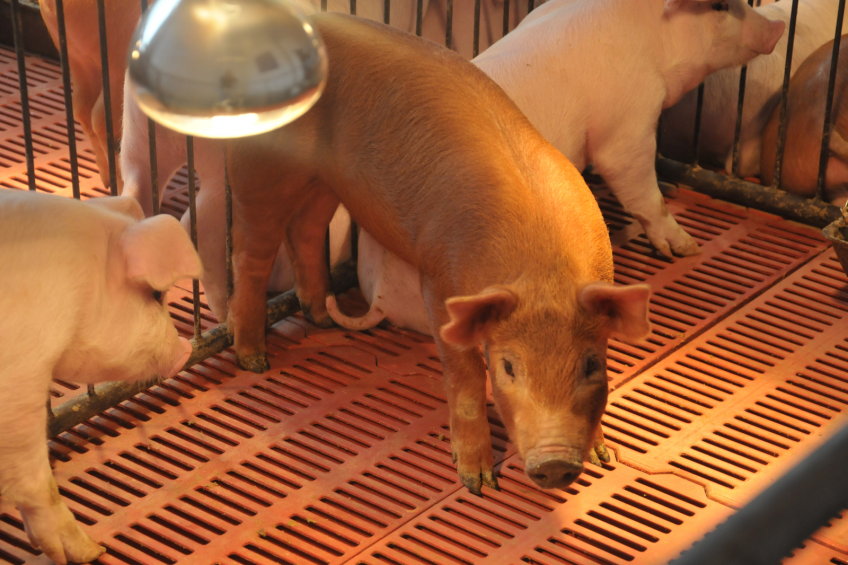Effects of functional yeast in piglet diets

The use of sprayed dried plasma protein is common in piglet diets worldwide, but an alternative is available in the form of functional yeast. Trials have observed the effects of functional yeast as a potential replacement for the spray-dried blood product when feeding piglets.
Sprayed dried plasma protein (SDPP) is a feed ingredient which is widely used in young animal diets, and the application effect of it is significant. However, with the enhanced focus of the global animal husbandry industry on food and biological safety, the demand for SDPP has started to decline. There are several aspects that the pig industry in particular is concerned about; on the one hand there were reports that SDPP may cause Porcine Epizootic Diarrhoea (PED), and on the other hand SDPP has biological homology problems. Although there is no clear conclusion on the fact that PED is caused by SDPP, the replacement of SDPP in young animal diets is gaining more and more attention by the animal husbandry industry worldwide.
GroPro, produced by Chinese manufacturer Angel Yeast, is a feed ingredient derived from yeast and offers an alternative to the use of SDPP in young animal diets around the world. During the third China Biological Feed Technology Conference in 2015, Yin Yulong, an academician of the Chinese Academy of Engineering, presented results from trials carried out in co-operation with the company. His research and practice found that the yeast product has a significant effect on SDPP replacement in young animal diets. Particularly, it was found that matching the yeast product with other protein feedstuffs and replacing SDPP can achieve an improved effect on promoting growth and feed attraction.
Research into SDPP replacement
Angel has spent several years on the research and application of its yeast additive’s capability of replacing SDPP partially or completely. When partially replacing SDPP, an experiment was conducted with 32 piglets of 18-days-age. Over a 14 day trial period the piglets were fed a diet where 2% of SDPP in creep feed was replaced with 2% of the yeast product. The addition of the yeast additive reduced the amount of SDPP required in creep feed and improved the growth performance of early weaning piglets (Figure 1).
In a second trial, 3% usage of SDPP in creep feed was completely replaced with the yeast product in the diets of 24 piglets of 21 days of age. This experiment conducted over a 14 day trial period again showed that completely replacing SDPP in creep feed did not reduce the growth performance of weaning piglets but encouraged a positive response seen in an improved average daily gain and improved average daily feed intake (Figure 2).
Feed attractant capabilities
The peptides and flavour nucleotides in the yeast product make it a good feed attractant. Trials have shown that the product can continue to strengthen feed attractant capabilities and improve feed intake gradually. Additionally, it can be used in piglet diets as an exogenous nucleic acid nutrition source because of the high nucleic acid content inherent within it. During the growth period in piglets, the addition of nucleotide is beneficial to save time and energy for nucleic acids synthesis, and finally promote growth in piglets.
In terms of gut protection, nucleic acid in yeast can not only increase the intestinal absorption area by improving the height of intestinal villi (Figure 3), but also promote the growth and development of intestinal cells by affecting intestinal cell division and differentiation, improving the activity of intestinal enzymes etc., so as to improve the intestinal health.
Figure 3 – The effect of yeast on intestinal villi development in piglets.

Immunity enhancement
The components with immunity enhancement function in the yeast product tested are beta-glucans, mannans, nucleic acids and peptides. Beta-1, 3/1, 6-glucan can enhance cellular and humoral immunity in piglets, increase antibody level and finally enhance the body’s resistance to disease.
Mannans can improve villus structure, affect the cytokine content and regulate the immune function of the body in piglets. Also, mannans can improve the local immune response by promoting the secretion of anti-inflammatory factors, regulating intestinal mucosal cell factor and expression of TLR4 gene under the condition of stress and disease. In a 28 day trial with 80 piglets aged 21-days old, the yeast additive replaced 2% of the original 4% of SDPP in the creep feed. When the SDPP was replaced by 2%, the serum immunoglobulin (IgA and IgM) was increased significantly, indicating that partially replacing SDPP with a yeast additive can promote immunity in piglets (Figure 4).
Most immune cells cannot synthesise enough nucleotides. Research revealed that the addition of exogenous nucleotides can promote the expression of B lymphocyte and Th cell antigen in weaning mice, and promote the differentiation and maturation of intestinal lymphocytes. Therefore, when the amount of nucleotides synthesis is limited under stress in piglets, the addition of nucleic acids from yeast can maintain the best function of lymphocytes in weaned piglets. Peptides can promote the development of immune function and promote the immune organ index in early weaned piglets.
These research trials have above all, shown the potential of the yeast product to function firstly as a nucleic acid and secondly as a protein source for young animals. This can replace SDPP partially or completely without affecting growth performance in piglets, and ultimately save costs for the producer.











